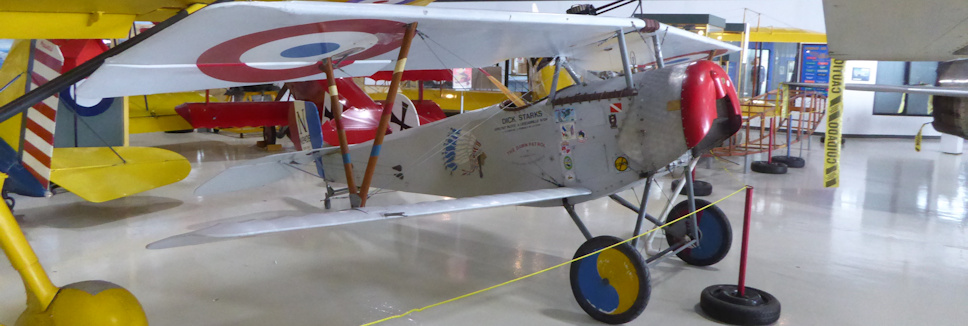The Nieuport 11 Bebe, developed from a prewar Gustave Delage design, originally designed for civilian racing competition, was one of the first true Allied fighters of World War 1. The single seat fighter proved to have excellent aerodynamics as it was based on a performance platform.
Developed over a period of only four months, the 11, a simplified version of the Nieuport 10, was instrumental in ending the 1916 dominance of Germanys Fokker Eindecker aircraft over the Verdun battlefields, in what was known as the "Fokker Scourge".
The 11 proved to outclass the Fokker in speed, climb rate and maneuverability. Its design included ailerons on the top wing for lateral control compared to the Fokker's wing warping, giving the 11 a lighter, quicker roll response.
The sesquiplane wing layout (full-sized top wing with two spars and a lower wing with a narrower chord length and a single spar) proved in flight to reduce drag and improved the rate of climb, as well as offering a better view from the cockpit than either a bi- or a monoplane.
The Fokker's sole remaining advantage was its synchronized machine gun, which fired forward through the arc of its propeller. At the time, the Allies lacked a similar system, and the Nieuport 11 s Lewis machine gun had to be mounted on the top of the upper wing in order to fire over the propeller.
During the Battle of Verdun in February 1916, the combination of the 11 s technical advantages and its organization into dedicated fighter units allowed the French to establish air superiority, ending the so-called "Fokker Scourge". The impact of the Nieuport was so dramatic that in mid-to-late 1916 several downed 11 aircraft were repaired by the Germans, rearmed with a synchronized machine gun, and flown at the front against the Allies.
The Nieuport 11 advantage forced radical changes in German tactics and subsequent aircraft design techniques.
As was the case with most WWI aircraft designs, the 11 did not have a long operational history, being replaced after a few months at the front by the updated Nieuport 16 and 17s.
This Nieuport 11 was built as a 7/8th flying replica of the original WWI aircraft by Dick and Sharon Starks of The Dawn Patrol in Kansas City, MO. Dick Starks flew the replica prior to donating the plane to the Combat Air Museum in 2021.





